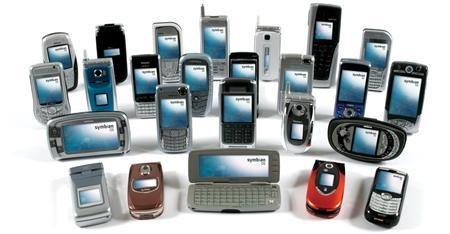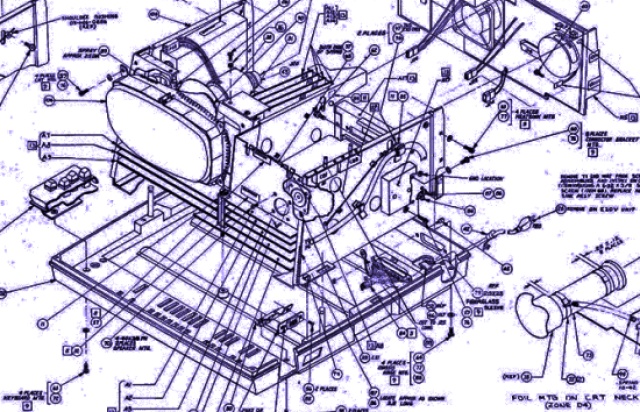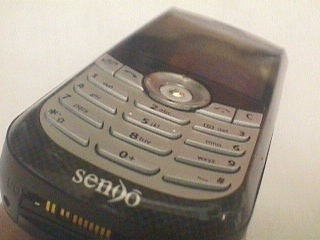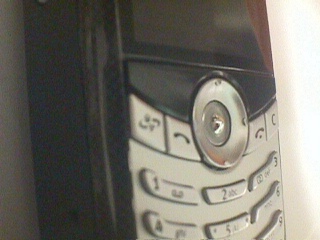When you look at something that has been made by hand, compared to something made by a machine bolting together components, there is always an aesthetic difference... and the feeling of something being worthwhile. But a pair of shoes is (mostly) still a pair of shoes, and the functionality remains the same.
Once in a while you'll see us reporting on a press release that Symbian have paired up with a manufacturer of a component, be it a chip, screen, graphics technology, and suchlike. To the man in the street these aren't huge deals, but they are subtly changing how smartphones are made and constructed.
I hate to do this, but if you look back at the Psion Series 5 (which ran, in essence Symbian OS v1 through v5), the entire device, right down to the chips, were custom designed for the machine; this took time and money. And a lot of development. In the first Symbian smartphones, you could see the same custom trends.
But now, with components available for all areas of the smartphone off the shelf, and many of them having code 'hooks' inside Symbian OS, there is less of a need for these customised examples. You just line up the boxes, circuit boards, peripherals and cases from your local fabrication plant, chuck in the free OS from the Symbian Foundation, and away you go.

Go on, you try and name them!
Of course it's not that easy, but in relative terms, building a smartphone is far easier than it was seven or eight years ago. While the technology that is available and is expected to be in a phone has ballooned through a mix of Moore's Law and attempts to find the next best thing, there is an air of standardisation about the baseline requirements.
One of the complaints about Symbian is that it is 'dominated by Nokia', and the raw numbers do bear that out (but hey, HTC dominate Windows Mobile, this isn't a black and white argument). This wasn't always the case, and if you cast your mind back to the early days of S60, when it was Series 60, alongside Nokia there were a number of projects from other manufacturers... I'm thinking of manufacturers like Motorola, Samsung, Panasonic, Sendo and Sony Ericsson.

Phones could look like anything in the future.
Symbian OS did not have huge sales in those days, and the devices from the smaller manufacturers struggled to get market recognition and share, and ultimately they did not sell enough to recoup the investment and ongoing costs of many of the companies. Given that we now have a much more mature market that more easily accepts smartphones, and a certain simplification of the manufacturing and design process thanks to the Symbian Foundation and the various partners, is the time right again for a range of smaller manufacturers to return to Symbian and start a boutique industry of smartphone design?
With a more open community to help support the device, off the shelf components and a number of factories, predominantly in the Far East, offering relatively low production costs, I wonder if the eco-system is now at the point where the mass-market-produced devices have opened up a space where a small group of people could head out and make run of smartphones, say 100-200,000 units, aimed at a niche market, and make a small but efficient business?
Isn't that essentially what Sendo were doing, just a few years too early? When you look back at the buzz around the Sendo X1 in terms of specifications it was miles ahead of the then front runners, the Nokia 7650, 3650 and 6600, with a candybar design, standard number keypad, stereo sound, heavily customisable home screen, and improved camera (with a flash!). Plans were put in place for the X2, with a strong focus on music, some six months before the Sony Walkman range of phones was announced. Unfortunately Sendo went into receivership before the X2 hit the streets.


Gone, forgotten but ready for a revivial?
Would the story of Sendo be any different if it happened today? I think so, for all the reasons above. And one other area. Marketing the device to the power-users would be much easier as the internet, blogs and news sites could be leveraged. Sendo did this with the X1 and X2 but the impact today would be far greater in terms of eyeballs and impact. And the internet could have provided an easy route for people to buy the device no matter where they are in the world – the need for acceptance by a carrier is diminished when you are talking to people happy to spend a few hundred pounds on unlocked smartphones for their own use.
The Symbian Foundation still needs to make everything available, and that's going to take a little bit longer, maybe a year, but that's enough time for the other elements required to be put in place by the partners. Hopefully we'll see a lot more manufacturers start up in the smartphone world and look at Symbian as the basis for their device. And what a wonderful world that would be.
-- Ewan Spence. July 2009.
